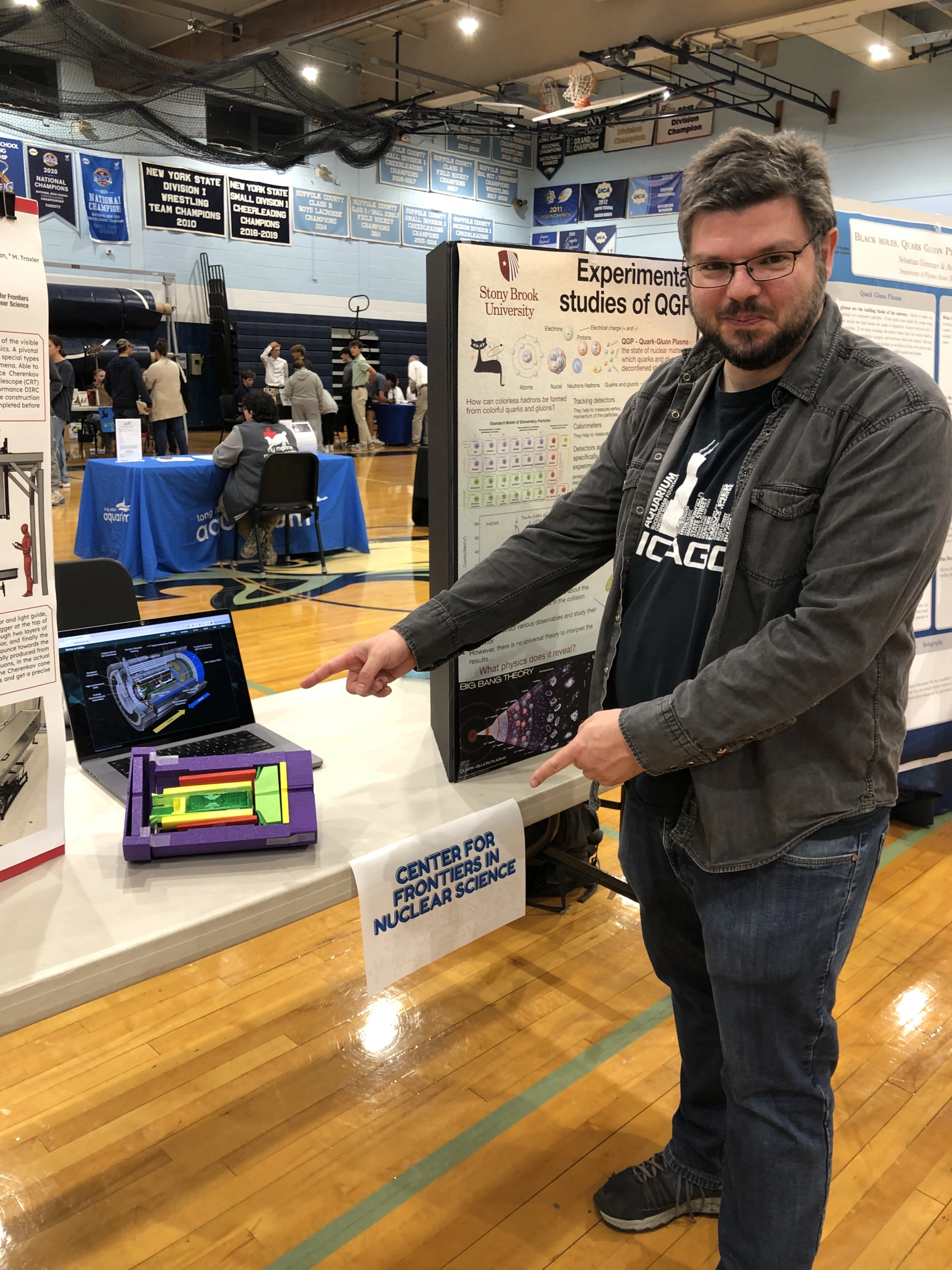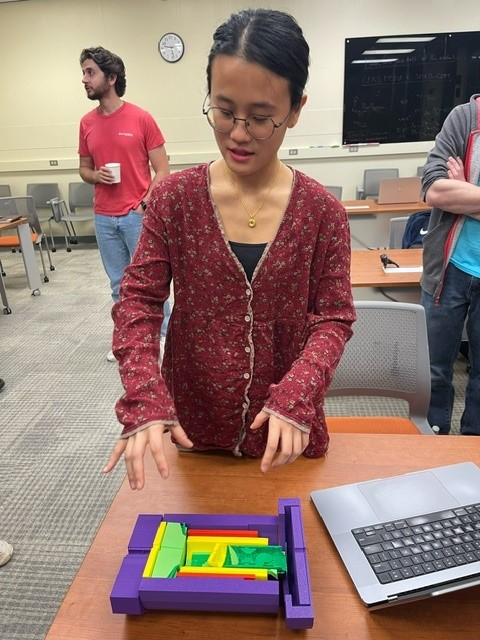SBU Re-Creates ePIC Detector:
An Interview With Prof. Jan Bernauer, Stony Brook University
Win Lin, a postdoc at Stony Brook University's Center for Frontiers in Nuclear Science,
assisted with collecting, cleaning, and assembling pieces of the 3D-printed detector.
Recently, a group of students at the Center for Frontiers in Nuclear Science at Stony
Brook University helped assemble a 3D printed model of ePIC, EIC's central detector.
EIC Communications spoke with Professor Jan Bernauer, Center for Frontiers in Nuclear
Science (CFNS), Department of Physics and Astronomy, Stony Brook University, who oversaw
the project.
How did you create this 3D model of the detector?
I created the 3D model file based on the EIC simulation package into a 3D printable
format. The software packages were developed by the EIC community and are used to
simulate the future ePIC detector to evaluate the performance of different detector
configurations. It uses various software solutions developed by the physics community
at large, for example, the package DD4HEP (to manage detector geometries) and Geant4
(to simulate the detector response to scattering events and the produced particles).
Win (one of my postdocs) then managed the printing (collected the printed part, cleaning
it up from supports, starting the next print) and assembled the parts together.
Win Lin, Stony Brook University postdoctoral student, holds pieces of the 3D detector
What is the benefit of creating a 3D model of the detector?
It is mainly meant for different outreach activities. The plan is to clean up the
model to make it printable and then publish it for free so that interested parties
can download and print it themselves. For example, we recently visited the Rocky Point
School District STEAM Exposition on Nov. 7 [see photo below] and used the 3D printed
model at the SBU Society of Physics Students Career Fair. At both events students
and parents showed great interest in the model and the experiment.
At both events students and parents showed great interest in the model and the experiment.
Prof. Jan Bernauer, Center for Frontiers in Nuclear Science (CFNS), Department of
Physics and Astronomy, Stony Brook University, pictured here with the 3D model of
ePIC at Rocky Point School's STEAM event on Nov. 7, 2024.
What excites you about the EIC?
EIC will be the next-generation nuclear physics facility in the US, if not in the
world. It has an extensive physics program. Currently, I am mainly fascinated by how
EIC can help us decode the non-perturbative nature of protons. Further, the ePIC collaboration
will also drive the cutting-edge for detector design, where I am mostly interested
in the paradigm change from a triggered readout to a fully streaming readout system.
I look forward to seeing how these developments will help make the promises of EIC
a reality, and how they will trickle down to smaller experiments to boost the capabilities
of the whole field.

Prof. Jan Bernauer, Center for Frontiers in Nuclear Science (CFNS), Department of Physics and Astronomy, Stony Brook University, pictured here with the 3D model of ePIC at Rocky Point School's STEAM event on Nov. 7, 2024.

Win Lin, a postdoc at Stony Brook University's Center for Frontiers in Nuclear Science,
assisted with collecting, cleaning, and assembling pieces of the 3D-printed detector.
